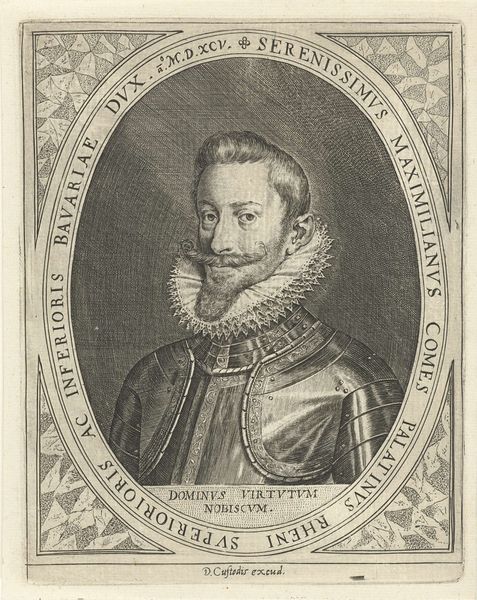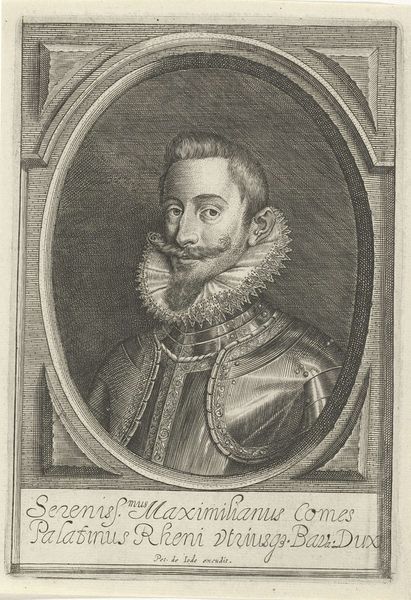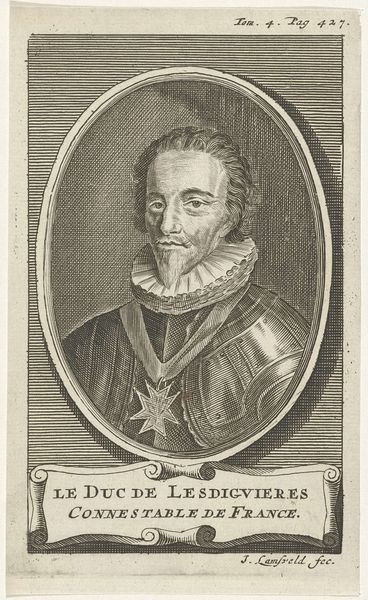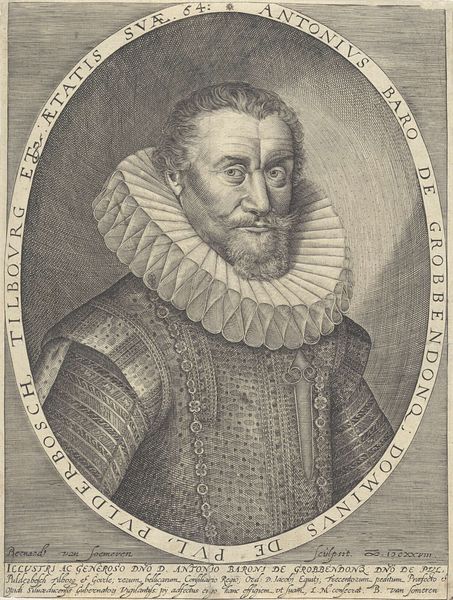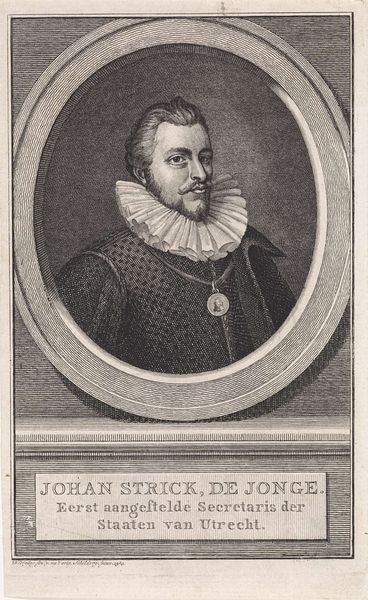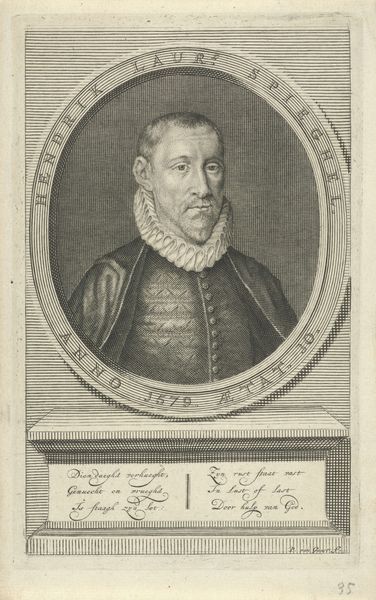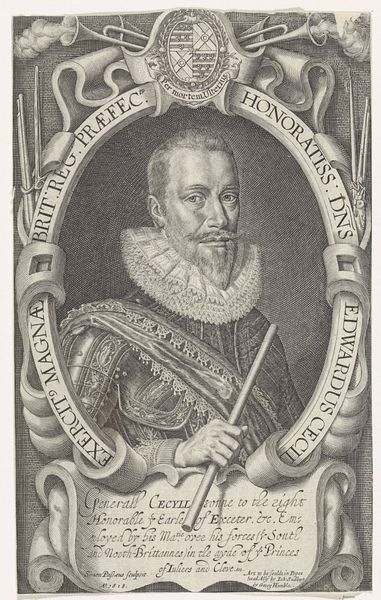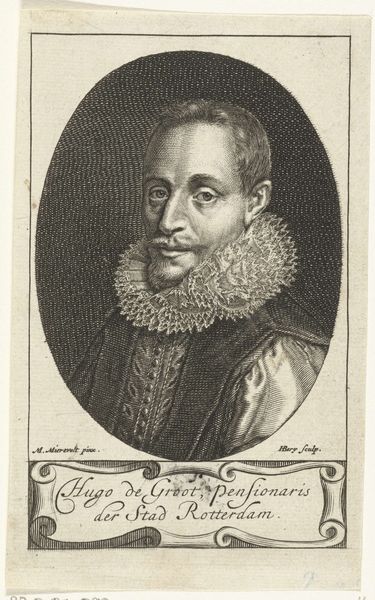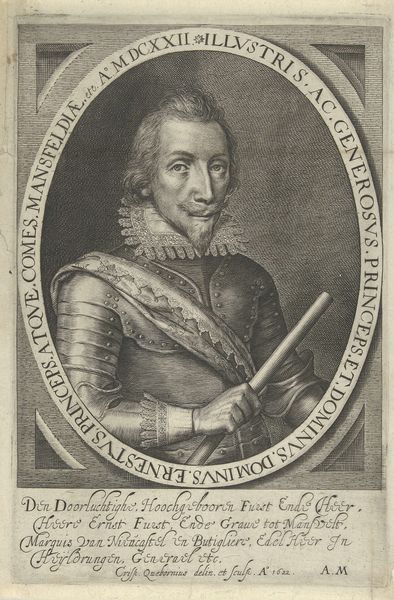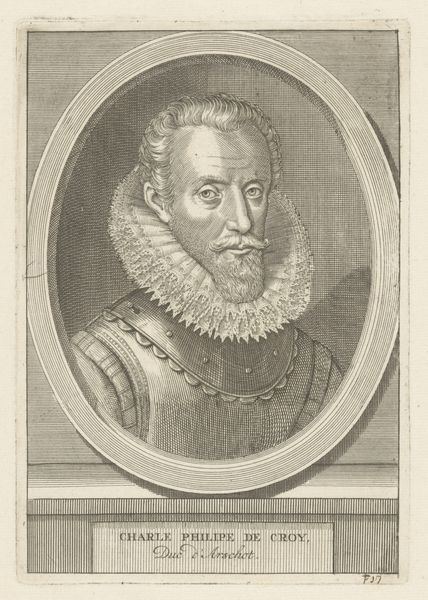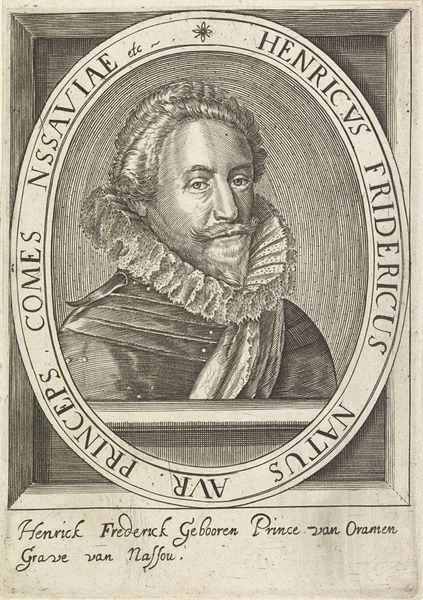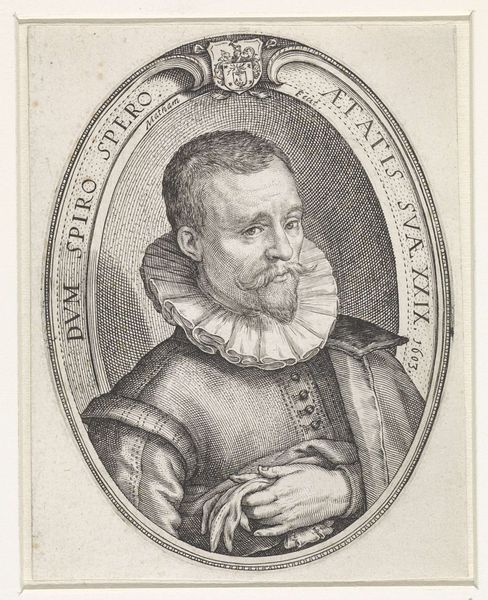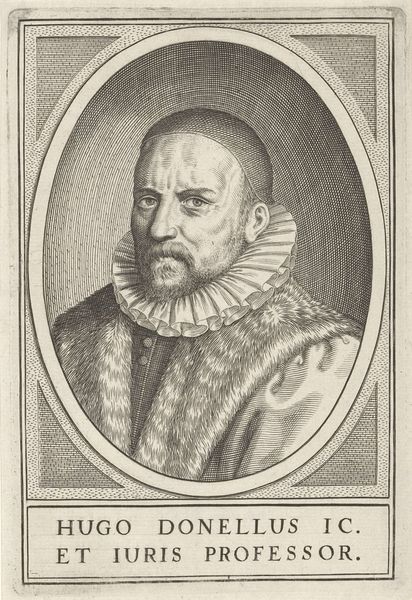
metal, engraving
#
portrait
#
metal
#
old engraving style
#
mannerism
#
portrait reference
#
pencil drawing
#
portrait drawing
#
history-painting
#
engraving
Dimensions: height 161 mm, width 124 mm
Copyright: Rijks Museum: Open Domain
Curator: We are looking at a portrait of Maximiliaan I van Beieren, made before 1595 by Johann Sadeler I. This work, currently residing in the Rijksmuseum, employs engraving on metal. Editor: It's austere, isn’t it? The detail in the ruff and armor—you can almost feel the coolness of the metal. There is real skill being displayed here in texture and shading. Curator: Indeed. What's fascinating to consider is the function of portraiture in solidifying power and shaping perceptions of identity. Maximiliaan is strategically positioned, embodying authority. The armor alludes to his role in warfare and politics of the time. This image, carefully constructed, reinforces his elite status. Editor: Let’s consider how an engraving allows for reproduction, then. It's about creating multiple originals. Disseminating an image far beyond the circles of traditional oil painting for similar likeness. What does this portrait *do*? And for whom? Are the qualities of "good likeness" in portraits like this even reliable for historians? Curator: Precisely. And the medium itself is part of that power. Printmaking allowed for the widespread distribution of his image. In a period defined by conflict, representation became paramount. This piece would reach varied audiences, constructing a particular narrative about his leadership. Also, engravings like these often served as templates for other art forms. Editor: Good point; it's about function beyond aesthetics, a manufacturing of image, literally. We're not looking just at “likeness”, but what kinds of industry is supported or conveyed within its production. This artwork serves a clear political purpose, of course, but it is also a reminder of the skills and networks inherent in Mannerist print production at the turn of the 17th century. Curator: Ultimately, this portrait allows us to trace connections between artistic production and political power at the end of the 16th century, emphasizing how visual representations molded historical narratives and power relations. Editor: Indeed. From its materiality to its societal role, this work offers a window into the world of artistic manufacture and power construction of early modern Europe.
Comments
No comments
Be the first to comment and join the conversation on the ultimate creative platform.
